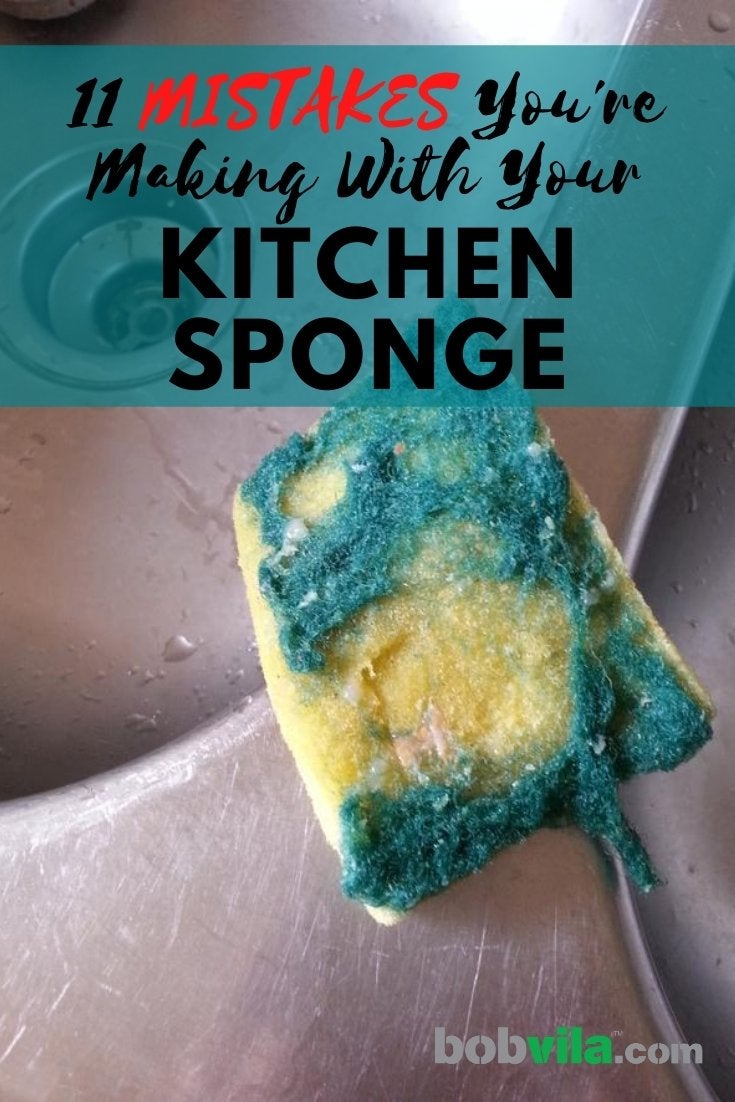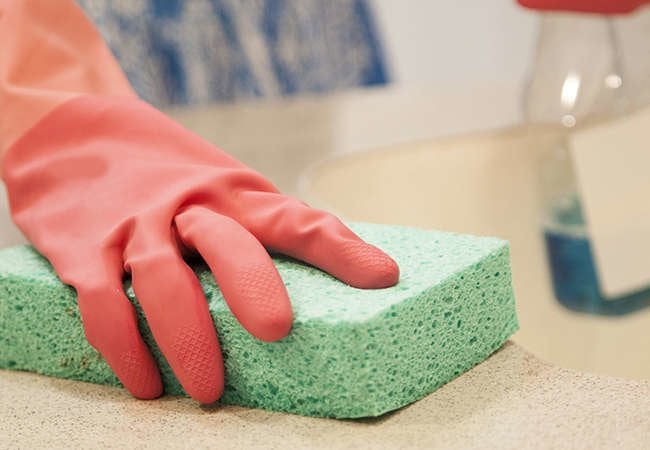

We may earn revenue from the products available on this page and participate in affiliate programs. Learn More ›
Home Advice You Can Trust
Tips, tricks & ideas for a better home and yard, delivered to your inbox daily.
The Sponge 411
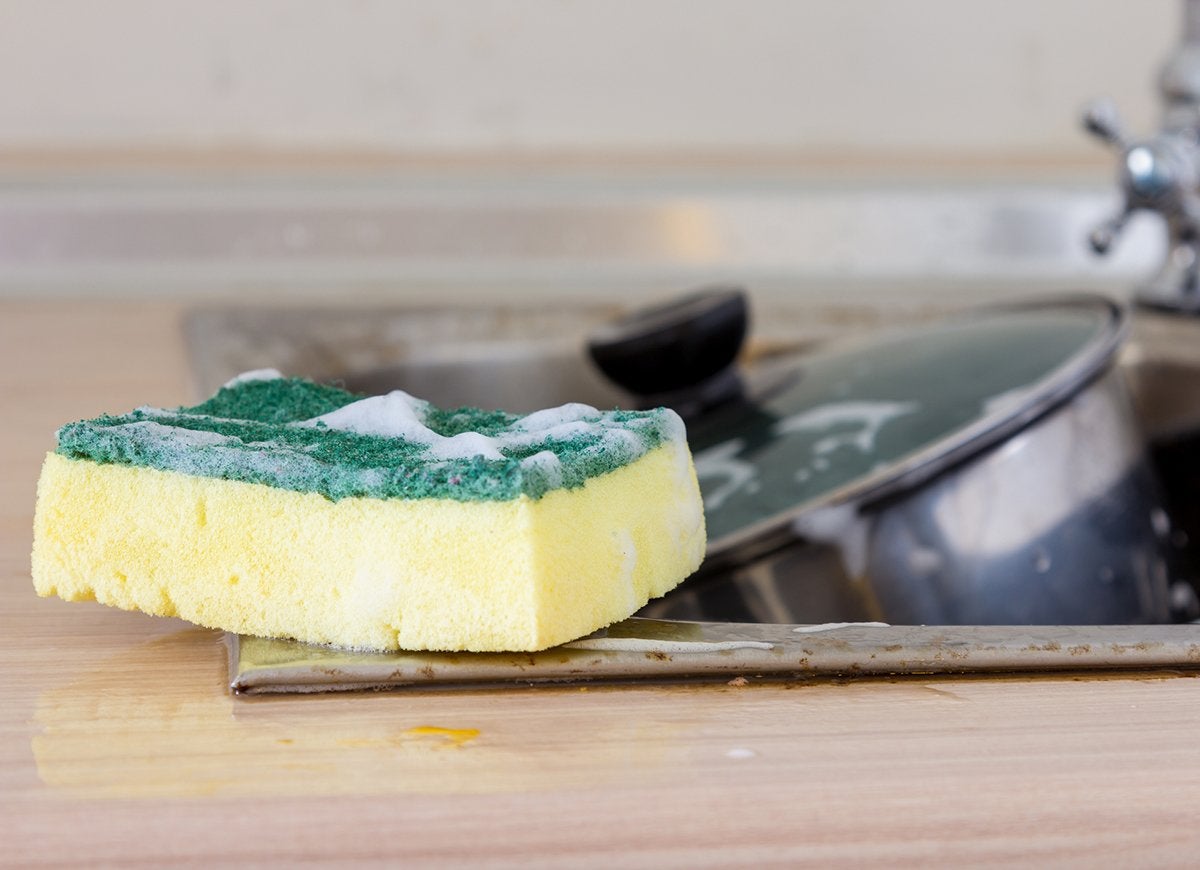
Synthetic kitchen sponges have been around since the 1940s. They’re durable and soak up water like nobody’s business, which makes them great for cleaning all types of surfaces. Chances are, though, that you’re using yours all wrong. Here are all the mistakes you’re making with your kitchen sponge.
You keep it around way too long.
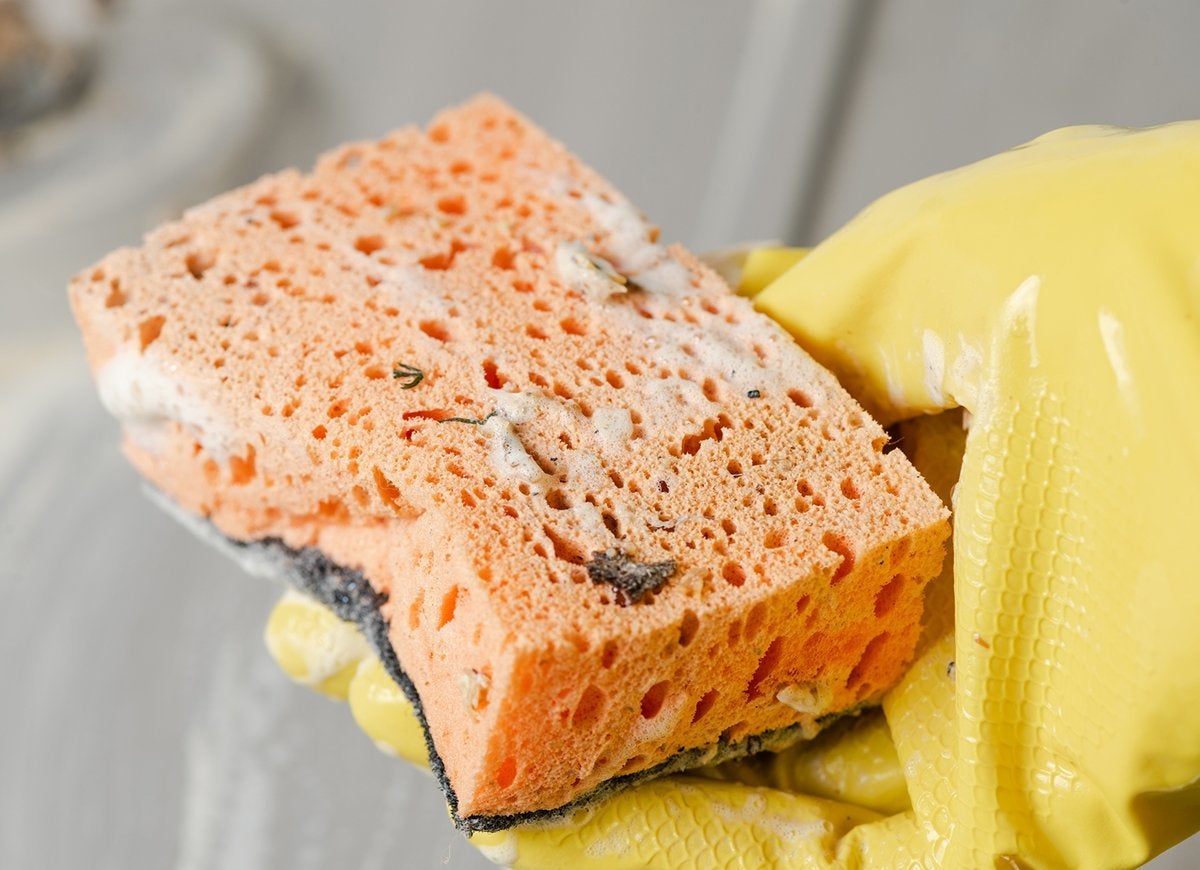
Is the sponge by your kitchen sink more than a week old? Yikes. It’s best to toss sponges after about a week of use. Keep one around longer and it’s bound to be teeming with bacteria—and smelling up your kitchen.
You leave it in the sink.
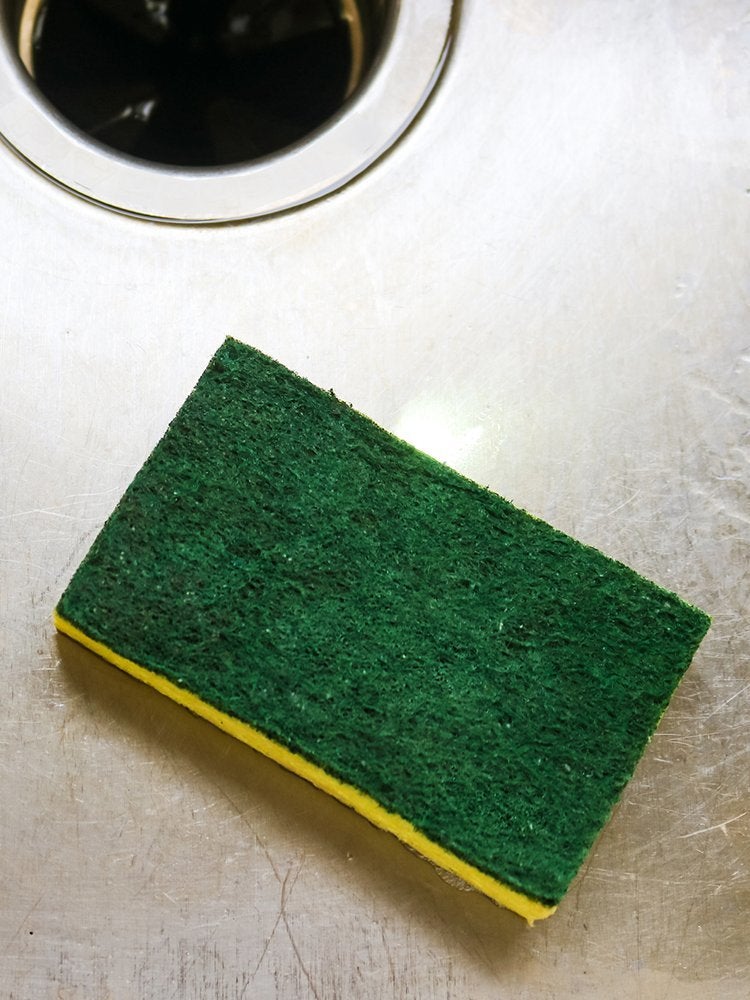
After scrubbing a batch of grimy dishes, it’s tempting to toss your sponge in the sink and forget about it until your next dishwashing session. However, no matter how carefully you wash your dinnerware, your sink is a haven for bacteria—and leaving your sponge in a germ-filled environment is a bad idea. Sponges are less likely to dry properly if left in a damp, moist sink environment—making it a perfect breeding ground for even more germs.
You use it for everything.
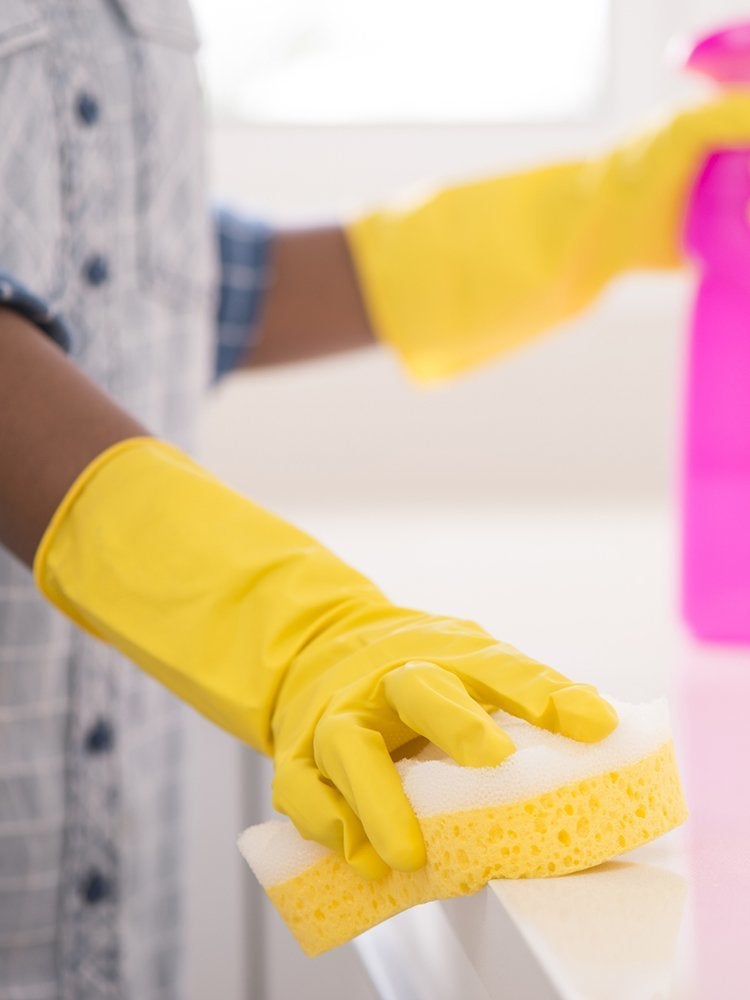
Avoid using your kitchen sponge to sop up every little spill. The more surfaces you touch with your sponge, the more likely it is to become contaminated. Keep your sponge away from meat juices, and use paper towels for those types of messes.
You store it improperly.
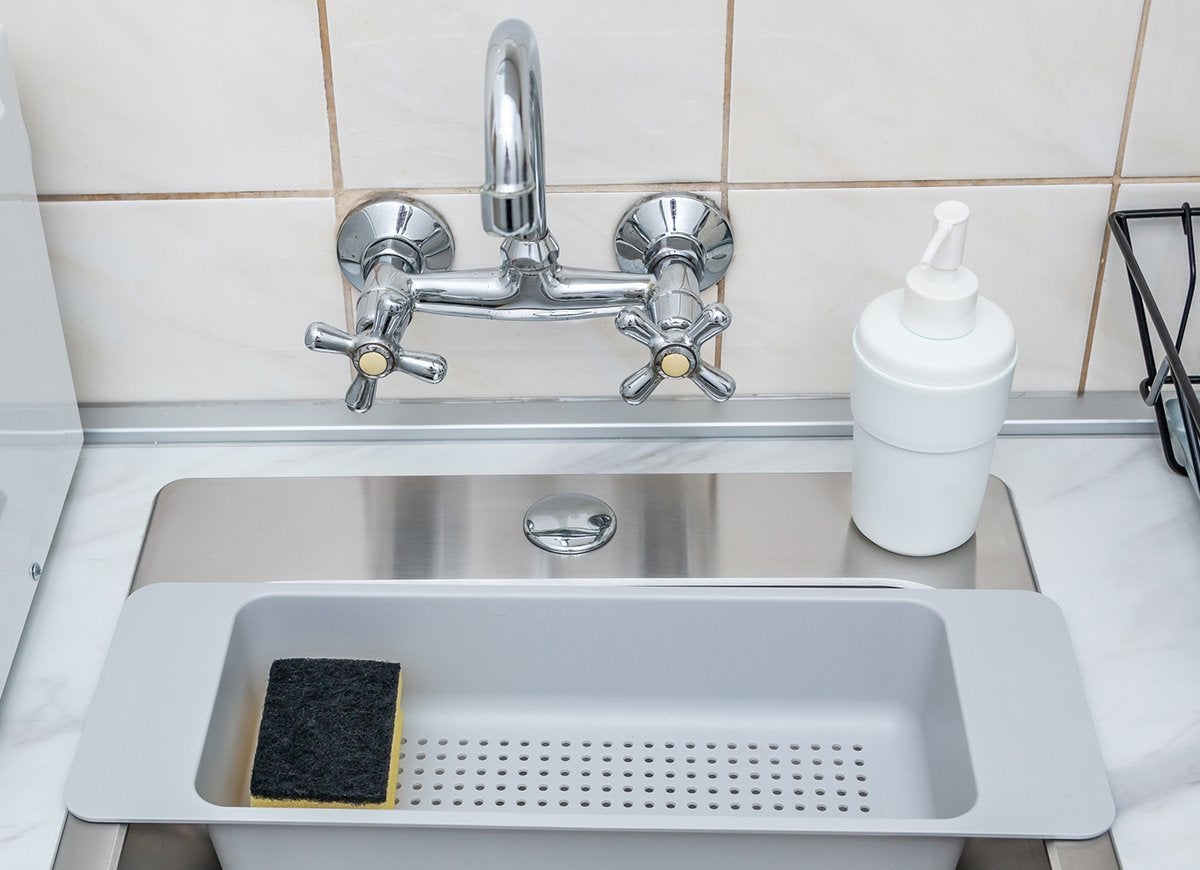
If you’re not supposed to leave your sponge in the sink, where does it go? Put your sponge in a basket or drying rack to promote air circulation. The quicker it dries out, the cleaner it will remain.
You stick it in the microwave.
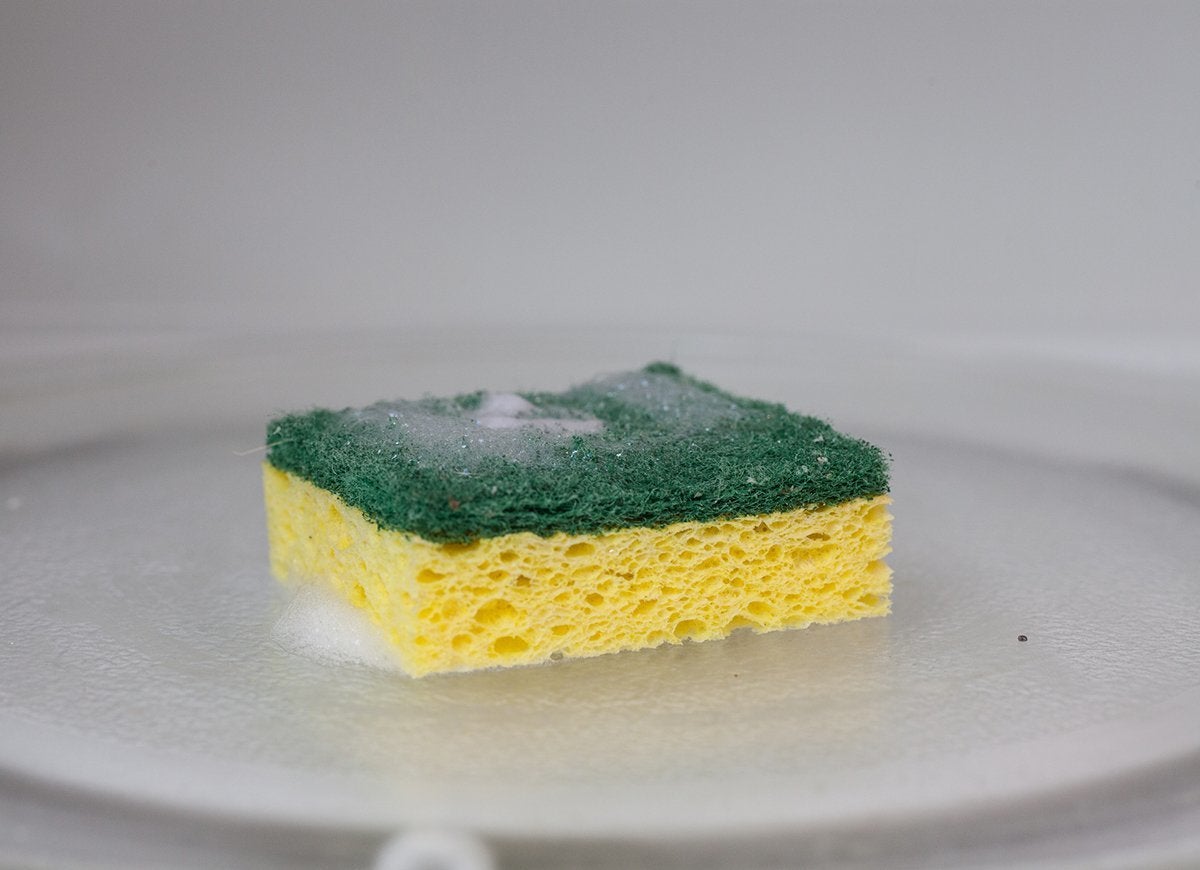
Many online outlets have touted this trick for banishing germs (guilty!), and while it does work on some pathogens, the ones that survive being nuked are bigger, badder, and more likely to make you sick. Skip this tip and replace your filthy sponge instead.
You run it through the dishwasher.
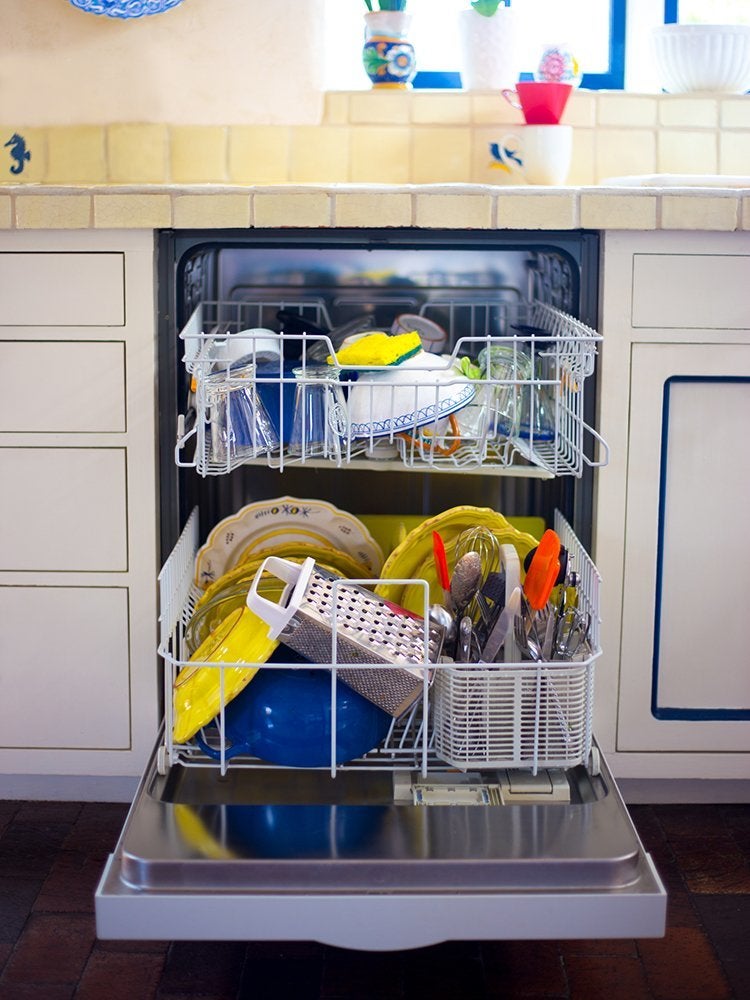
Like the microwave, the high heat of the dishwasher only serves to leave behind superbugs that multiply to recolonize your trusty sponge. When you start to feel like it’s time for a run through a cycle, resist the urge and toss the nasty sponge instead.
You don’t clean it between uses.
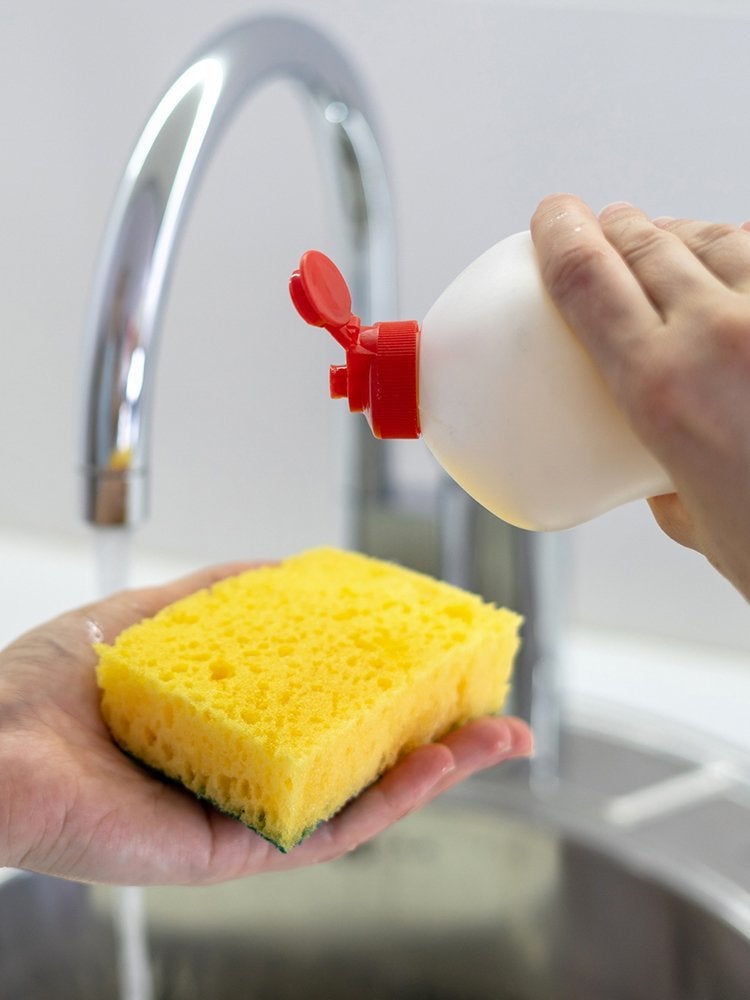
If you sop up messes and wipe down counters with your sponge, then leave it by the sink without so much as a rinse, you’re encouraging bacterial growth. Give it a quick cleanup now and again; experts suggest cleaning sponges between uses with diluted bleach.
You use whole sponges to clean.
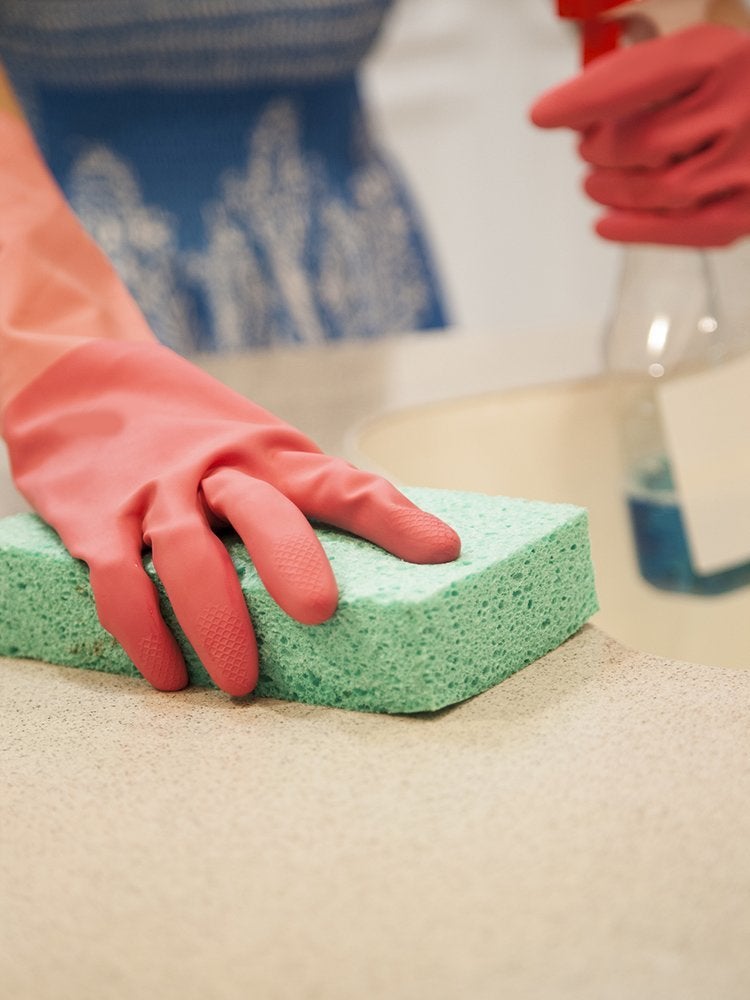
If throwing away a sponge every week sounds wasteful, but you’re not ready to part ways with your favorite cleaning tool, try slicing your sponge in half as soon as you pull it out of the package and before you put it to work. Half of a sponge handles most cleaning tasks as effectively as a whole one, and helps you stretch your dollar further.
You don’t squeeze it out.
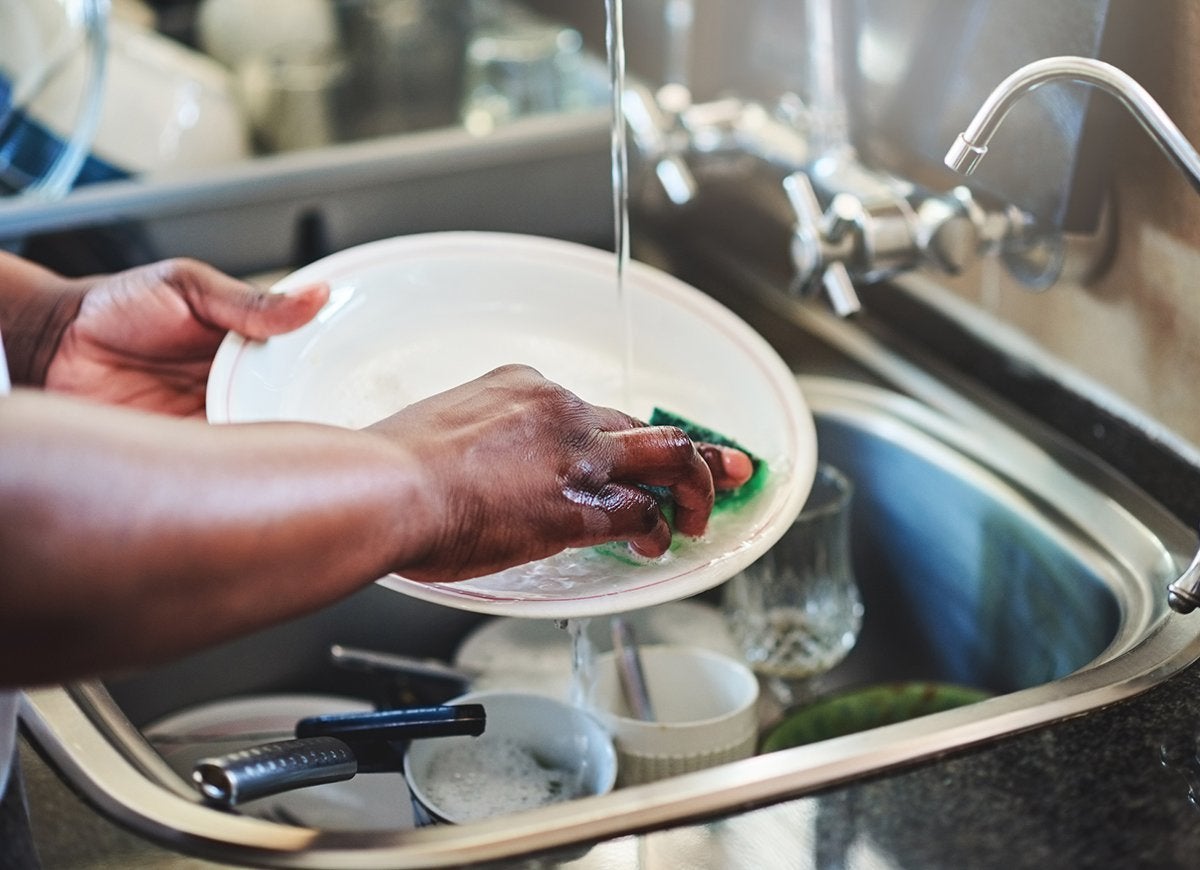
When you’re done washing dishes or wiping down surfaces with your kitchen sponge, be sure to wring it out completely. A wrung-out sponge will dry quicker than a sopping wet one, and a drier sponge equals a cleaner sponge.
You use a sponge when you should be using paper towels.
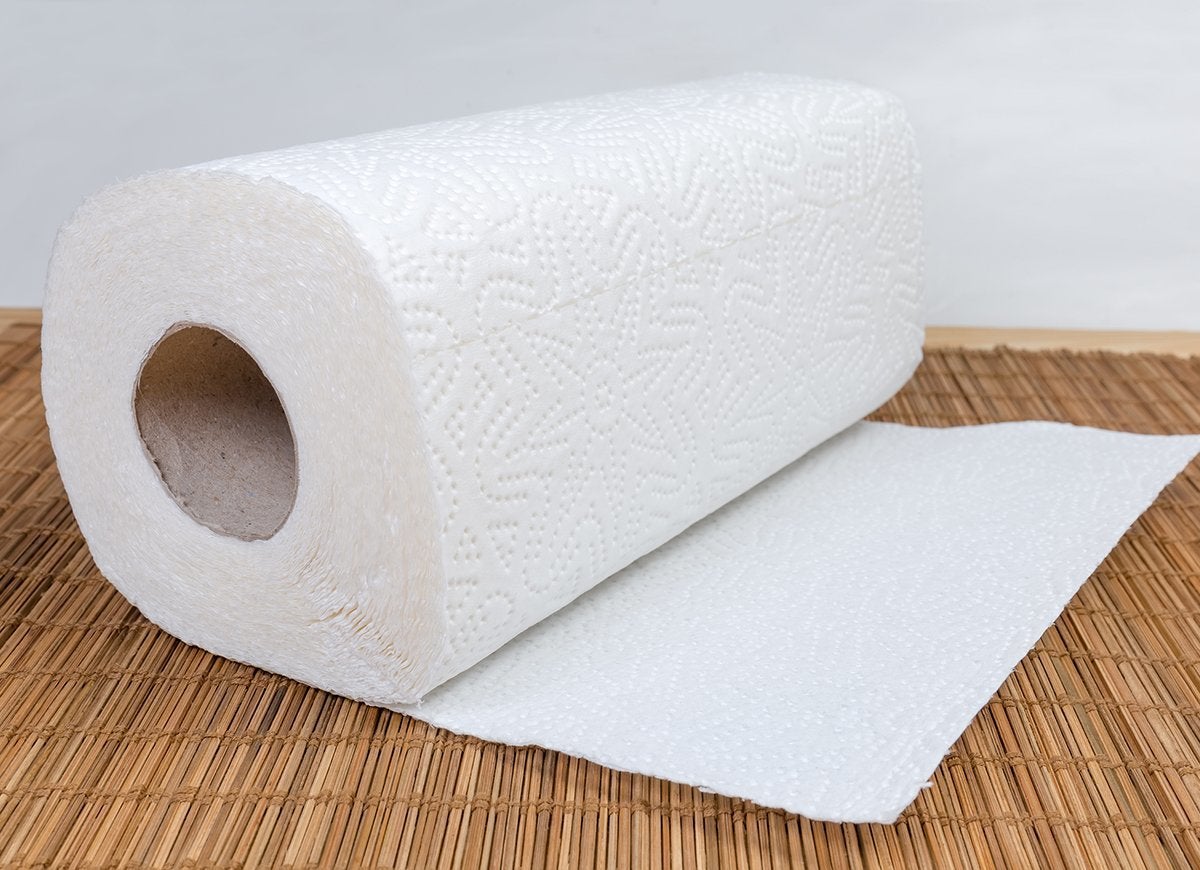
Some tasks are better suited for paper towels. Cleaning up meat juices, for instance, is best left to absorbent paper towels. Instead of potentially contaminating other surfaces—like your sink—with a sponge coated in raw chicken juices, you can simply toss the soiled paper towels when you finish tidying the meal prep area.
You wash with a regular sponge.
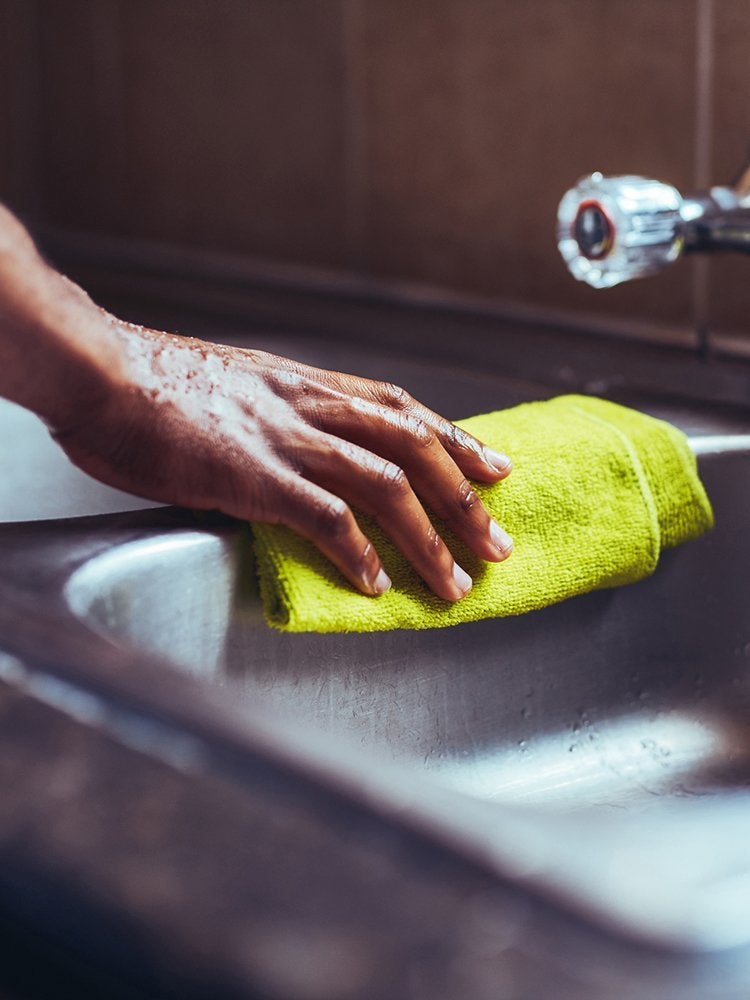
Maybe it’s time to reconsider kitchen sponges altogether. Use a dishcloth in place of a sponge and toss it in the hamper after each cleaning session. If that sounds impractical, opt for silicone scrubbers (like this one available on Amazon), which can be washed and reused to banish bacteria.

This Is the Year for a Kitchen Renovation
Whether you’re selling or staying, everyone can get something out of a kitchen update. Learn why we consider this renovation the Most Valuable Project of 2025 and how to stay on budget.
